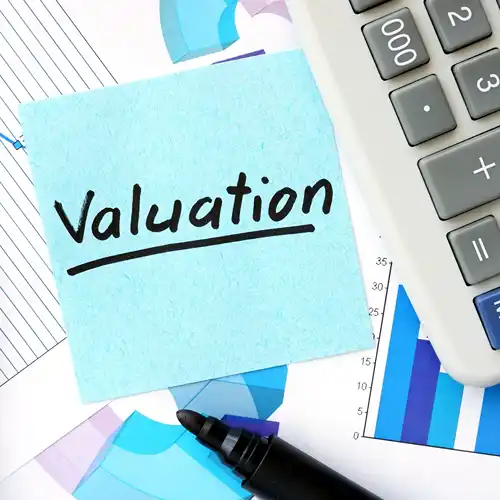
Startups and Valuation – How to Calculate Your Worth in the Early Stages
Imagine you’re building a “lemonade stand in the cloud”
Suppose you (or your team) decide to build a small digital business: maybe an app, a service, or a prototype you hope will grow big one day. That’s a startup. At first, you have:
- A great idea
- Some sketches or a minimal product (often called MVP, Minimum Viable Product)
- Maybe a few customers
- Some costs (hosting, development, marketing)
- Big dreams
One day someone asks: “What is your startup worth?” That’s the question of valuation.
Valuation is like asking: if someone were to buy your company today (or invest in it), how much would they pay? For an early-stage venture, valuation is more art than pure science—but there are rules, methods, and ways to think well about it.
This article will walk you through:
- Why valuation matters
- Common methods (the simple ones)
- Special challenges in India
- How a company like ValuGenius helps
- Tips & warnings
Let’s go!
1. Why valuation matters
Valuation matters because:
- It determines how much equity (shares) you give to early investors.
- If your startup is worth ₹1 crore and an investor gives ₹20 lakhs, they get 20% of the company (ignoring dilution etc.).
- It helps you plan financially (financial planning).
- It sets expectations: if you priced yourself too high, investors may balk. Too low, and you give away too much.
- It gives internal motivation and a “north star” number to aim for.
In short, valuation = your “price tag,” even if it’s a soft one.
2. Common valuation methods
Here are a few simple ways people value early startups. As you grow, you may layer on more complex models.
(a) Comparable method (or “you vs them”)
This is like saying: “Hey, similar startups have been sold or funded at X multiple (say, 5× revenues). So I’ll apply that multiple to my metrics.”
- Find 2–3 startups in your domain, region (or in India), which got funding recently.
- See at what valuation they were funded relative to their revenues or user base.
- Apply a similar multiple to your numbers (adjusting for risk, growth, geography).
This is a Valuation Business standard method (i.e. how business valuation is often done in the field).

For example: If a peer got funded at 4× its revenue (i.e. valuation = 4 × annual revenue), and your projected revenue is ₹1 crore, you might estimate valuation ≈ ₹4 crore (before discounts).
This is a Valuation Business standard method (i.e. how business valuation is often done in the field).
(b) Discounted Cash Flow (DCF) – future forecast trick
This is more advanced. You try to estimate how much money the startup might make in future years, discount them (i.e. bring their value today), and sum them up.
Steps:
- Forecast future cash flows (say for 5–7 years).
- Choose a discount rate (to account for risk).
- Bring those future values back to “today’s value.”
- Add residual value (if you expect you’ll sell or your company will have value beyond those years).
For very early startups, DCF is often shaky (since forecasts are uncertain), so people use simplified or hybrid approaches.
(c) Cost or Replacement method
You add up how much money (cost) was invested, how many hours were spent, and treat that as a base. It’s like “what it cost me to build it so far” method.
This is safer when you have few revenues, but risky because cost doesn’t always equal market value or future potential.
(d) Venture Capital (VC) factor / rule-of-thumb method
Some VCs use rule-of-thumb multiples depending on stage, risk, sector. For instance:
- Pre-seed: maybe 3× to 8× of what you expect in Year 1
- Seed: maybe 8× to 20×
- Later stages: based on revenue multiples
These are rough heuristics, not laws.
3. Challenges & special aspects in India (Valuation in India)
Doing valuations in India (or India-centric startups) brings extra wrinkles:
- Less transparency in comparable deals
- Higher perceived risk (policy changes, regulatory risk)
- Currency risk (for startups targeting global users)
- Valuation expectations bubble: in bull markets, investors sometimes overpay.
- Many startups in India are capital-intensive or burn cash early, making forecasting harder.
So, as a startup in India, you must balance ambition with realism.

4. How ValuGenius helps
This is where ValuGenius comes in as a partner. You can think of ValuGenius as your valuation and advisory sidekick. What ValuGenius does (or can do):
- Use robust models to estimate a fair valuation, combining multiple methods
- Adjust for India-specific risks (policy, currency, comparables)
- Help with financial planning (so your startup’s numbers make sense)
- Help pitch decks, showing credible valuation to investors
- Act as one of the financial planning companies in Mumbai that understands both local and global context
- Provide updates or revaluations over time
By working with ValuGenius, a startup can avoid big mistakes (underpricing, overpricing) and speak investor language.
When a startup scales, many new valuation methods come into play (EBITDA multiples, growth multiples, public comparables), but the core idea remains: investors pay for future expected performance, risk, and comparables.
5. Tips & Warnings (from lessons in the field)
- Don’t overpromise: If your forecast is absurdly optimistic, investors will discount heavily.
- Be transparent about assumptions: Show how you got your numbers.
- Keep comparables realistic: Don’t compare to billion-dollar unicorns unless you have matching scale or risk profile.
- Expect dilution: Later rounds may dilute your share, so think how valuation changes over rounds.
- Revalue often: As you hit milestones (users, revenues, metrics), re-calculate.
- Be careful of bubbles: Valuation hype can lead to overvaluation — that later crashes.
Use a good advisor: That’s where ValuGenius (or other financial planners) add value: checking your assumptions, backing you up, giving credibility.
Sample simplified valuation walkthrough
Let’s say:
- You run a small app, revenue ₹20 lakhs/year.
- Comparable startups (in India) recently got funded at 4× to 8× revenues.
- You choose 6× as a multiple (because you’re in a somewhat niche area).
- Valuation = ₹20 lakhs × 6 = ₹1.2 crores
Then you adjust:
- Risk discount (say 20%) → Net valuation = 0.8 × ₹1.2 crores = ₹0.96 crores
- Adjust for cash in bank, debts, growth potential
- Final pre-money valuation (before investor money) ~ ₹0.9–1.1 crores
Investor invests ₹50 lakhs, so they might get ~45–50% (depending on agreements).
Later, if revenue grows, your multiple may increase and valuation may be ₹5 crores.*
Why this matters for professionals and decision makers
- When you’re raising funds, institutional investors (angels, VCs) will scrutinize your valuation logic.
- As a founder, knowing your worth helps you negotiate.
- For financial planning companies (especially those in Mumbai or India), understanding valuation gives clients better advice.
- If you work in advisory, banking, or startup support ecosystems, you’ll often guide early-stage startups.
Valuation is not a one-time number—it’s a living, evolving estimate. It changes with your business, metrics, market conditions, and investor sentiment.

